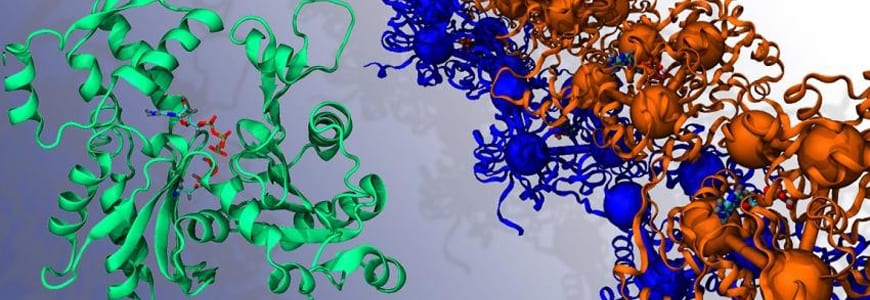By Rob Mitchum // September 26, 2014
Inside the busy world of the cell, two of the most important players are actin and ATP. Actin is the most abundent protein in cells, and the cytoskeleton that it forms is responsible for a cell’s shape and movement. ATP, adenosine triphosphate, is known as the cell’s primary energy source, switching to ADP and donating the resultant energy to a wide range of cellular processes. So understanding how these two critical elements work together is an important pursuit for cell biology, and a place where computer modeling can provide a crucial assist.
In a news article at Phys.org, Center for Multiscale Theory and Simulation director and CI Senior Fellow Gregory Voth talks about a recent paper from his group that explored the actin-ATP partnership using coarse-grained modeling and quantum mechanics simulation. The team, which also included co-authors Martin McCullagh and Marissa G. Saunders, examined why one form of actin, called F-actin, is 40,000 times faster at hydrolyzing ATP to ADP than another form, called G-actin. Simulations found changes in the position of amino acids and water that help explain the enhanced hydrolysis by F-actin, producing a positive feedback loop that may underlie the phenomenon of actin “treadmilling.”
These new insights on how actin unleashes the energy of ATP may be significant for using computer models to study other cellular process as well, Voth said.
“There are many, many proteins that utilize ATP (or GTP) hydrolysis for modulate their behavior,” Voth said. “I think this work opens up the possibility to include that process more routinely in the computational study of proteins.”
You can read the original paper, published in the Journal of the American Chemical Society, here.

